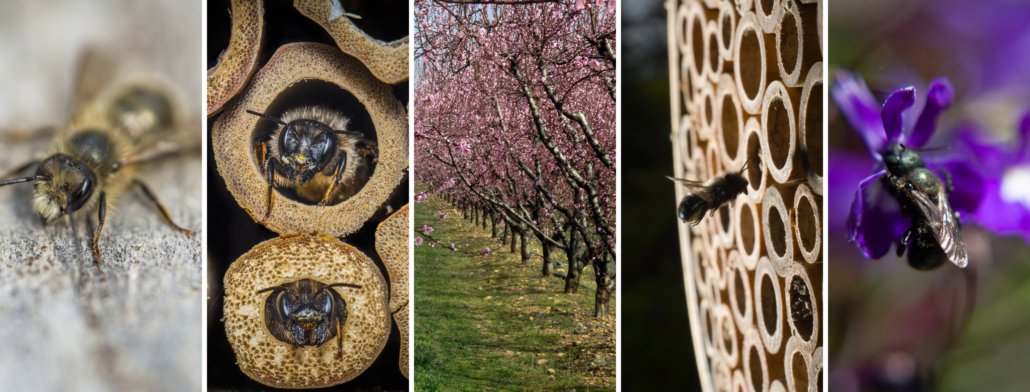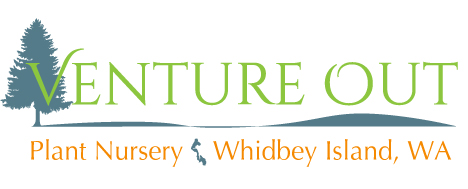Orchard Mason Bee Basics

Mason Bees have created quite a buzz these past few years, becoming popular with gardeners, farmers, orchardists, and stewards of our native habitats – with good reason! They are excellent pollinators, pollinating 95% of flowers they visit vs. honeybees’ 5%. This means more pollination from fewer bees, in fact it’s been found that 250 female mason bees can pollinate apples as effectively as about 50,000 honey bees! They are active starting in about late March or so here in Western WA, continuing for about 6-8 weeks until the adults die, leaving the cocoons to mature until the next spring. Their active time coincides with the bloom time of many fruit bearing plants, so they are a great addition to any home orchard or fruit garden. If you’re struggling with fruit production in your garden, adding mason bees is an excellent idea.
These native bees are solitary, nesting each to their own holes, and therefore do not have a hive or make honey. With no reason to be aggressive or protective, orchard mason bees are extremely gentle, and rarely sting. There have been zero reported cases of severe allergic reaction to mason bee stings. Kids love to watch the bees emerge from their cocoons and fill up their nest holes, they are a great way to teach about life cycles as well as develop a love for nature. Native bees are on the decline, so raising your own native bees is a great way to contribute to biodiversity and make sure the plants around you get pollinated.
If you’d like to learn more about mason bees, our bee supplier Knox Cellars Mason Bees has lots of great information HERE.
What you need to get started with Mason Bees:
Early nectar sources – dandelions, Forsythia, Pieris, witch hazel, Maple trees and fruit trees or shrubs are all great early blooming plants.
Clayey mud – if you’ve got clay in your soil naturally, you can just dig a small hole for them to access it, otherwise provide a small dish of moist clay for them nearby.
NO chemical or pesticide use – if your property is small, talk with your neighbors as well to see if they are pesticide free to keep your bees healthy.
Nesting holes – these can be paper tubes, reeds, bamboo tubes or special wooden blocks which can be cleaned. Avoid drilled wood blocks, as they can’t be cleaned, and if using reeds, paper or bamboo they’ll need to be replaced each year. These will need to be kept in a small housing of some kind that is sturdy, protective and water resistant and attached to a house, shed or sturdy post. We have several options for nesting holes and shelters available at the nursery.
Bees! – we have live bees available as loose cocoons or filled tubes as part of an easy starter kit. We keep them refrigerated so ask any nursery employee, we’re happy to get them for you.
